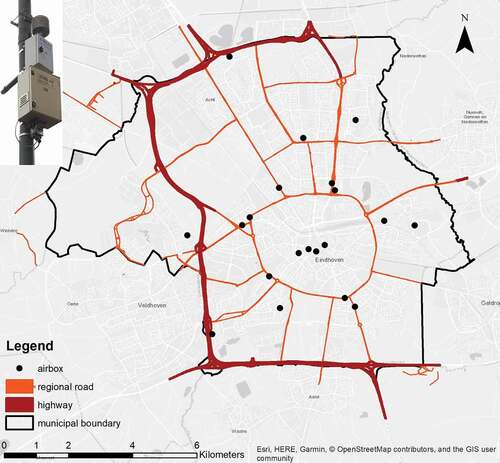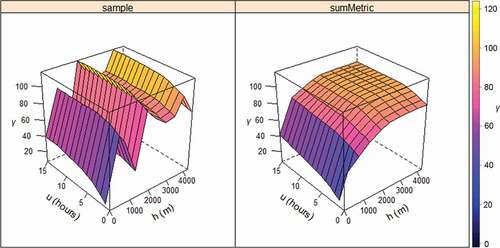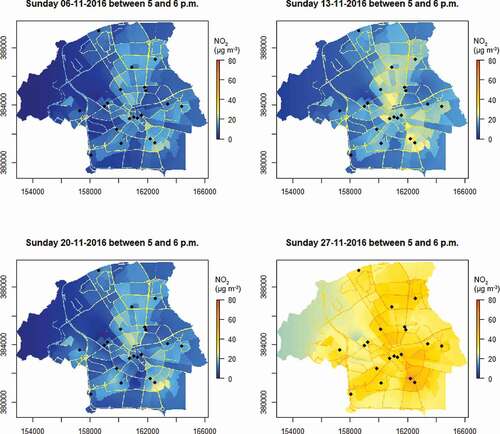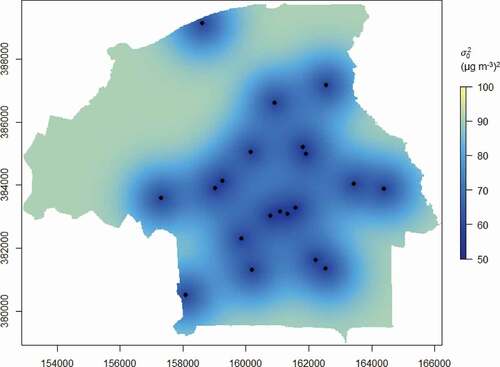Figures & data
Figure 1. Locations of the airboxes in Eindhoven which were used for this study. The black line represents the municipal boundary. The coloured lines represent major roads.

Table 1. and p-values for the trend part of the regression model. The baseline for road type is ‘no road’. The baseline wind direction is ‘calm/variable’, the baseline weekday/weekends is ‘weekday’, and the baseline for hour is ‘0ʹ (23:00–0:00).
Table 2. Spatio-temporal variogram parameter estimates for the fitted sum-metric variogram.
Figure 3. Prediction maps of NO2 concentrations at four time stamps on Monday the 7th of November, 2016 (UTC time; local time is 1 hour later). The covariate ‘population density’ was included as lattice data, creating clearly distinguished features for the neighborhoods. The red ellipse indicates a hotspot, with locally elevated NO2 concentrations around the southern main city entrance road.

Data and codes availability statement
The data and codes that support the findings of this study are available in DANS with the identifier 10.17026/dans-xmp-fw6h.



